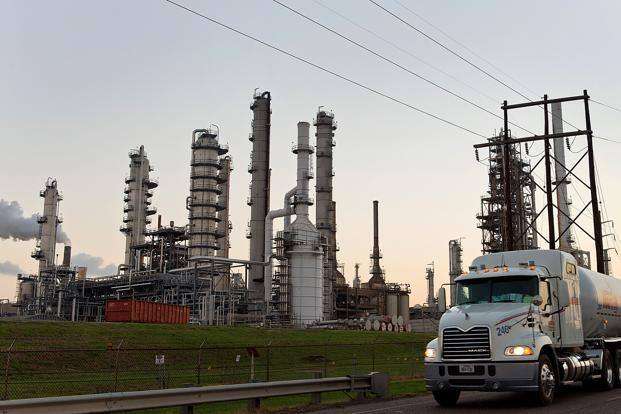The United States is poised to produce more crude oil in 2023 than any country in human history, according to a recent CNN report. This is occurring even as the Biden administration pursues policies aimed at restricting fossil fuel production in order to address climate change concerns.
Texas is leading the way in this production surge. In October and November 2022, the Lone Star State achieved all-time record highs for both crude oil and natural gas output. Texas pumped 5.7 million barrels of oil per day during this period alongside 33.6 billion cubic feet daily of natural gas in October – more than any state has ever produced.
November also brought new records for natural gas liquids at 3.5 million barrels per day and refinery gas direct use at 3.2 million barrels per day. And all this comes amid President Biden’s pledge to “get rid of” the American oil and gas industry in the name of fighting climate change.
The administration’s actual power to control production levels is limited, however. The U.S. market allows private companies to develop oil and gas resources on private lands when economic and technological conditions make production feasible. So while federal policies can restrict drilling on public lands, global energy economics and advancements in extraction technologies are enabling firms to tap previously inaccessible reserves.
U.S. oil production peaked at 9.6 million barrels daily in 1970 before declining over the ensuing decades. It hit a low point of just 5 million barrels per day in 2008 as traditional fields depleted. But then hydraulic fracturing and directional drilling techniques unlocked vast quantities of oil trapped inside shale rock formations, triggering a “shale revolution.”
Oil production came roaring back, reaching over 9 million barrels again by 2015. Output could hit a staggering 13 million barrels per day in 2023 if current trends continue. Much of this surge is occurring in Texas’ Permian Basin and other shale plays thanks to better technologies and more efficient operations.
President Biden has instructed heads of federal agencies to implement regulations impeding oil and gas output. But the recent records in Texas demonstrate production gains are still possible despite federal opposition. As Dean Foreman, chief economist of the Texas Oil and Gas Association, put it:
“Texas’ role in the energy landscape has become increasingly critical, achieving this feat with modest drilling activity, thanks to productivity gains. As the state has set new records in oil and natural gas production, processing, and exports, these achievements not only underscore Texas’ competitive advantages in resources, business climate, and trade but also highlight its growing importance in the national and global energy discourse.”
The economic impact of the production boom is also massive. In just the first three quarters of 2022, Texas exported over $164 billion worth of oil, natural gas, and refined products. Tens of thousands of new high-paying jobs have also been created, helping lift rural communities out of poverty.
At the same time, scientists widely agree reducing fossil fuel usage is critical to avoid climate change’s worst impacts. The latest IPCC report calls for rapid, deep cuts to carbon emissions on the order of 43% by 2030. Most analyses show achieving net-zero emissions globally by 2050 is necessary to meet Paris Agreement goals.
Expanding oil and gas production also raises issues like habitat destruction, air and water pollution, induced seismicity from wastewater injection, and even local health impacts. Multiple studies have linked proximity to drilling sites with higher rates of illnesses like asthma, cancer, birth defects and more, especially among marginalized communities.
Yet the fact remains over 80% of global energy demand is currently met by oil, gas and coal. Energy consumption will also likely continue rising significantly in coming decades as developing nations lift billions out of poverty into energy-intensive middle-class lifestyles.
The International Energy Agency projects global energy demand could grow by as much as 50% by 2050 in a baseline scenario. Most analyses indicate oil and gas will remain the world’s dominant energy resources absent major clean energy deployments and efficiency gains well beyond what most governments are currently pursuing.
So while President Biden may publicly oppose expanded drilling, market economics and energy security concerns are fueling its continued growth, at least for now. Absent much faster clean energy transitions, surging oil and gas output could be necessary to meet rising global demand and prevent market price volatility.
For 2023, all signs point to America edging past Russia and Saudi Arabia to take the global crude oil production crown. Led by Texas and its friendly regulatory climate, the shale boom seems poised to drive U.S. output past any country ever whether President Biden likes it or not.





















